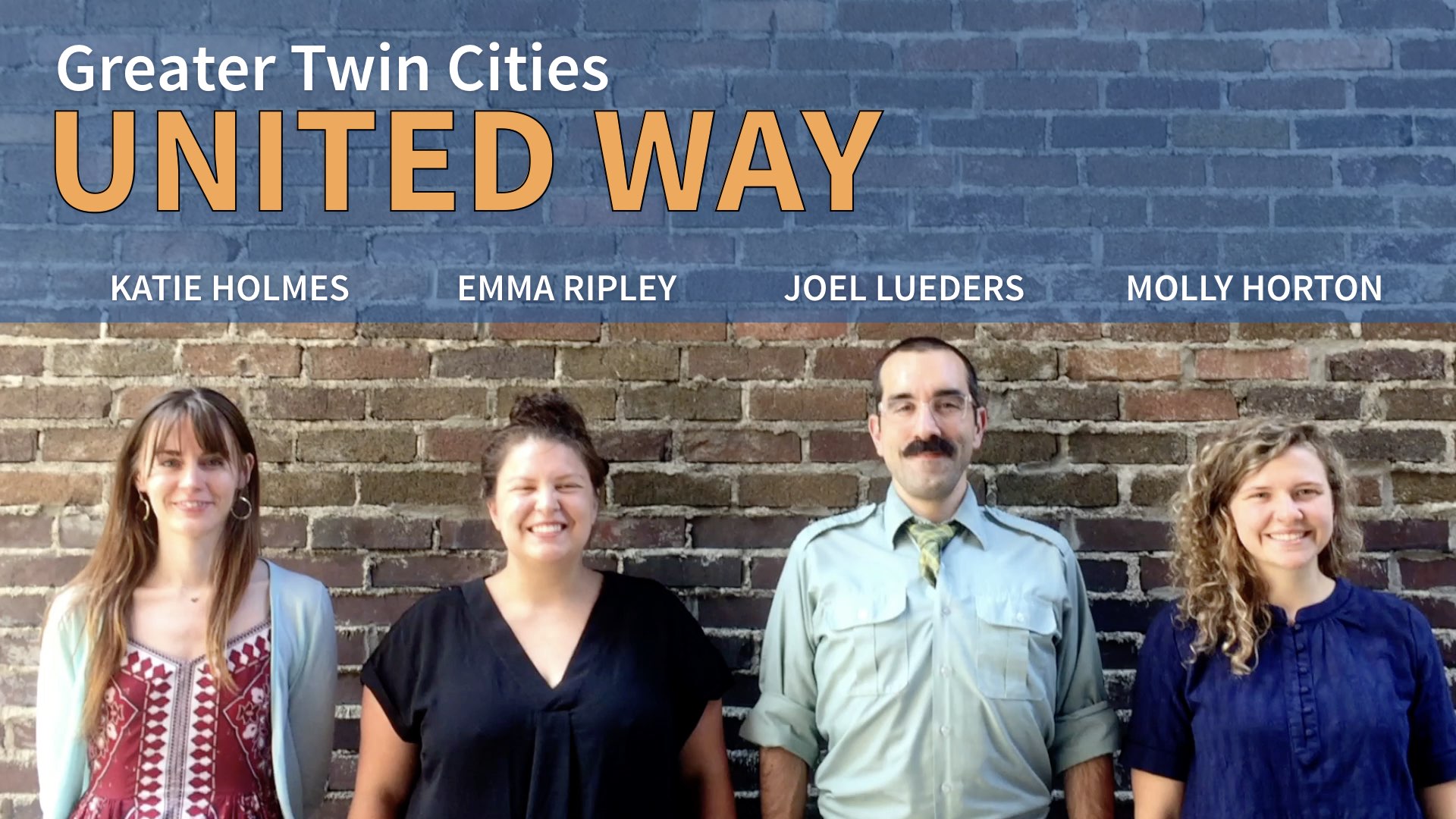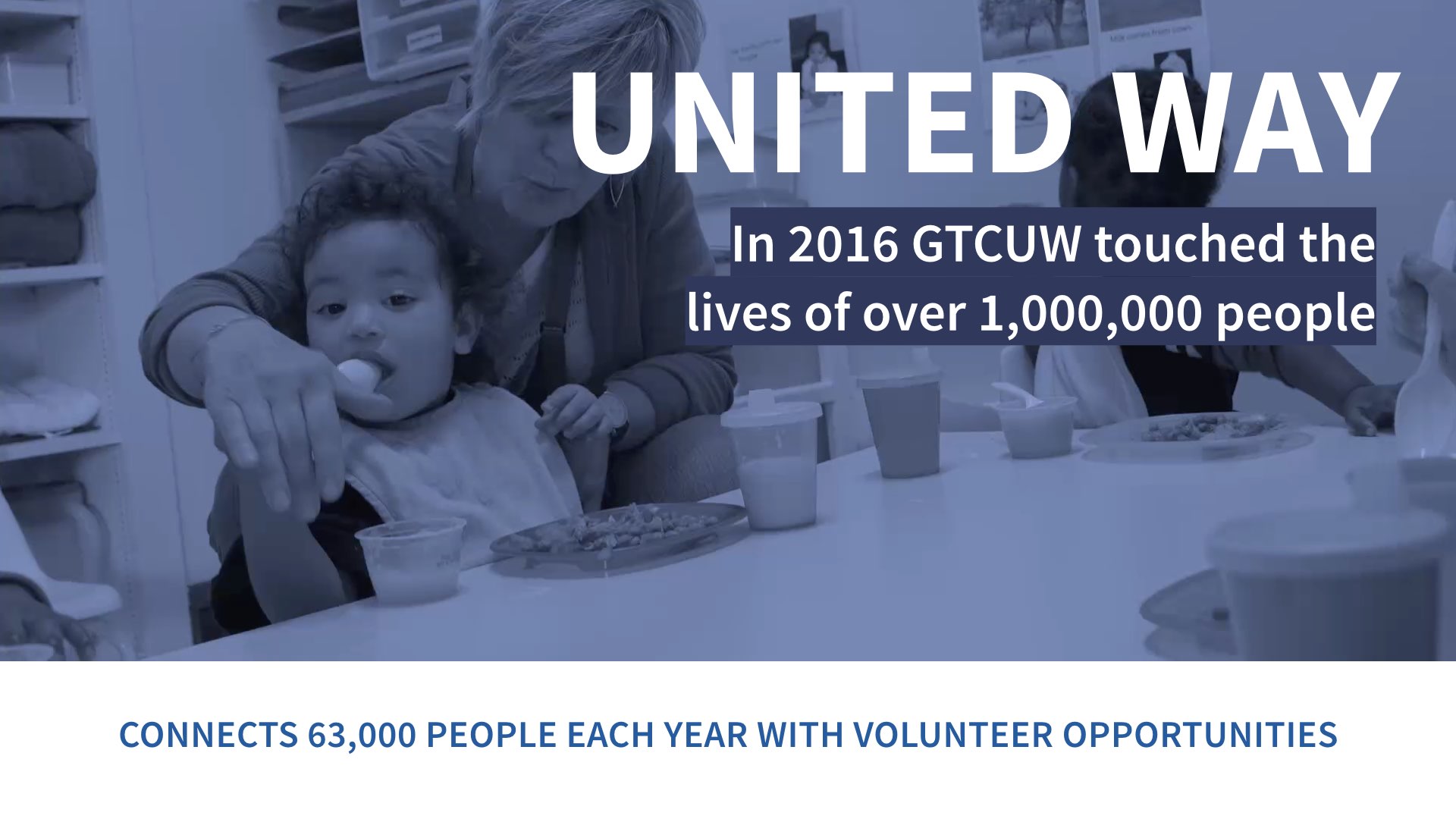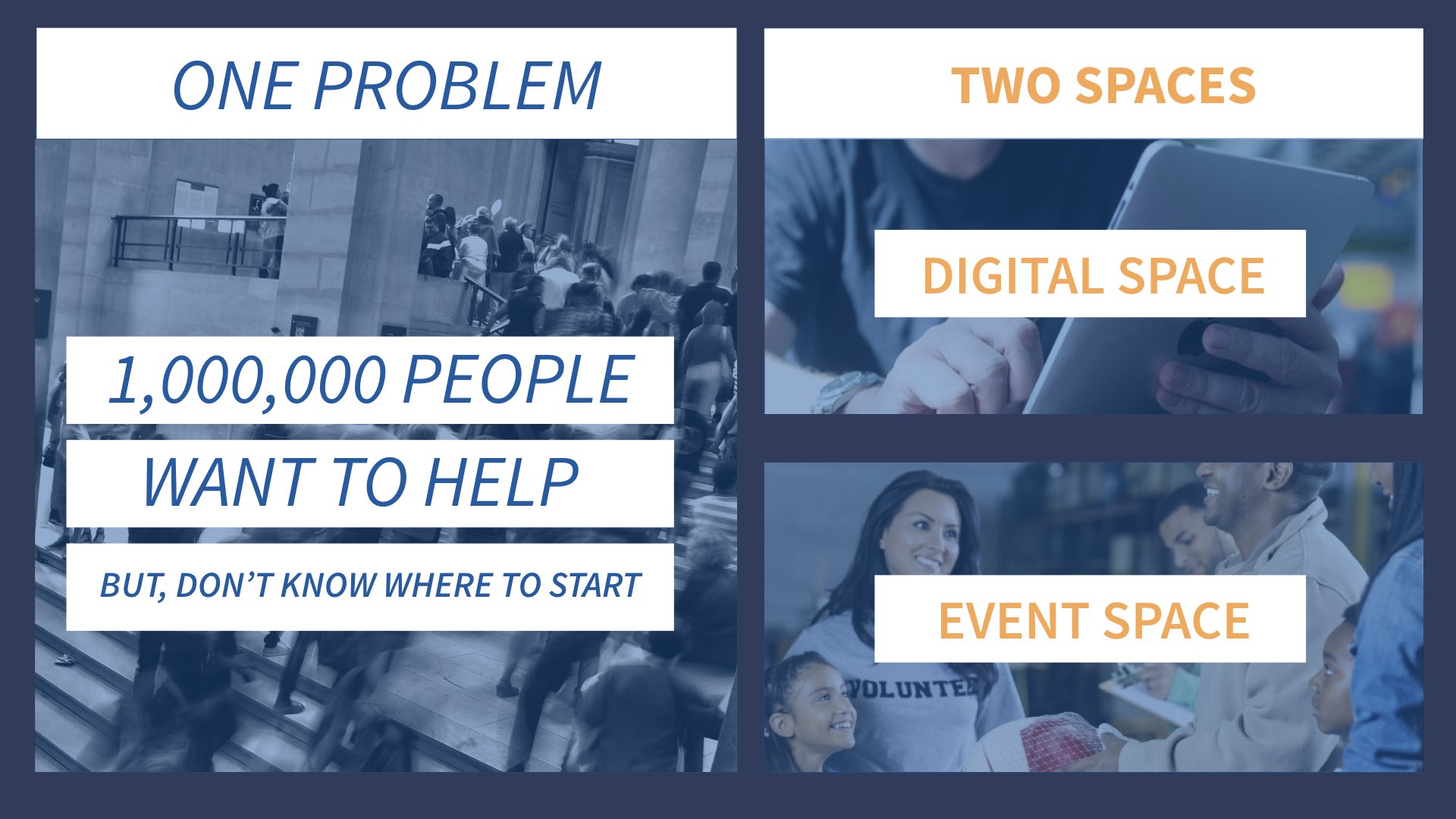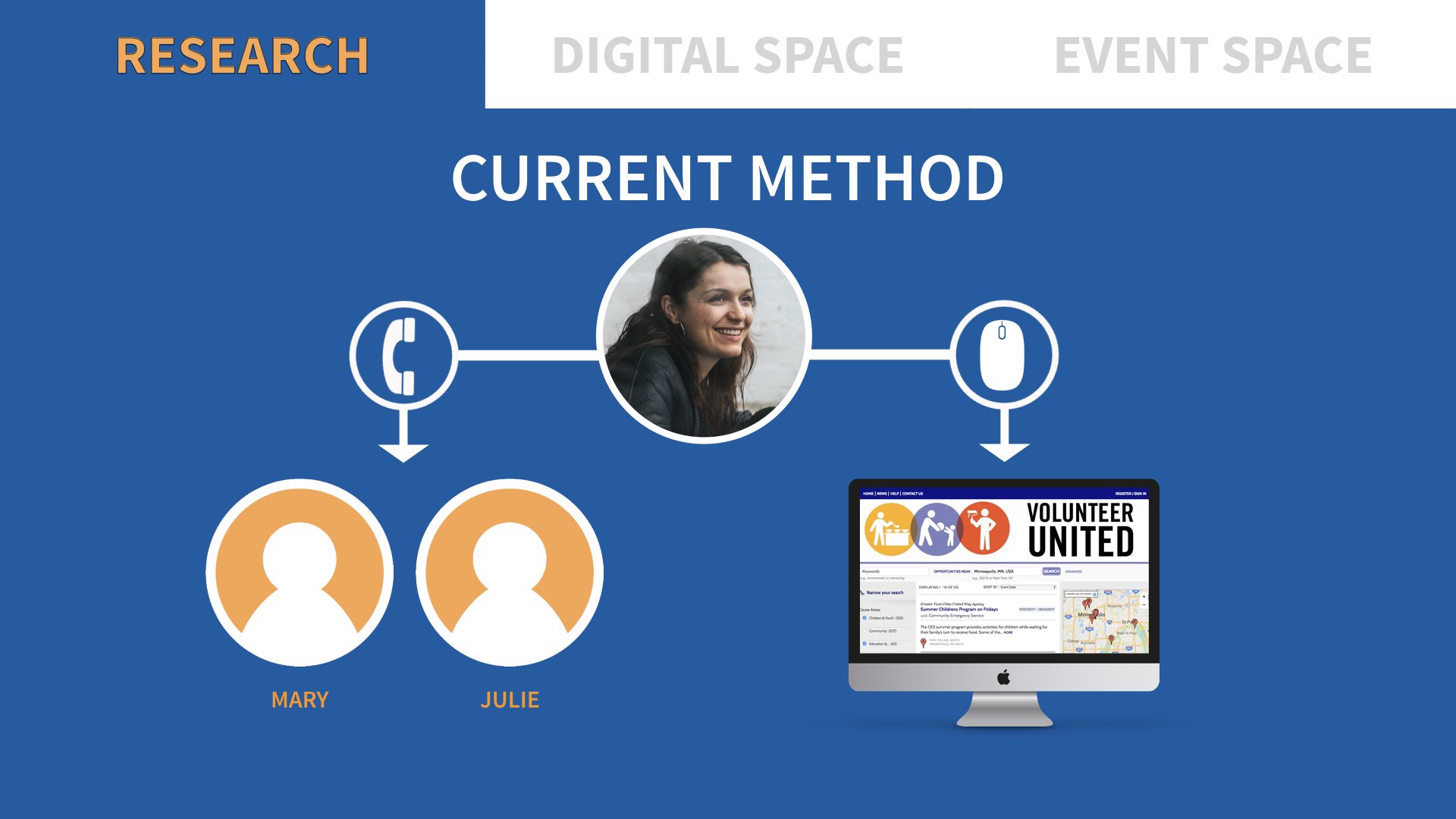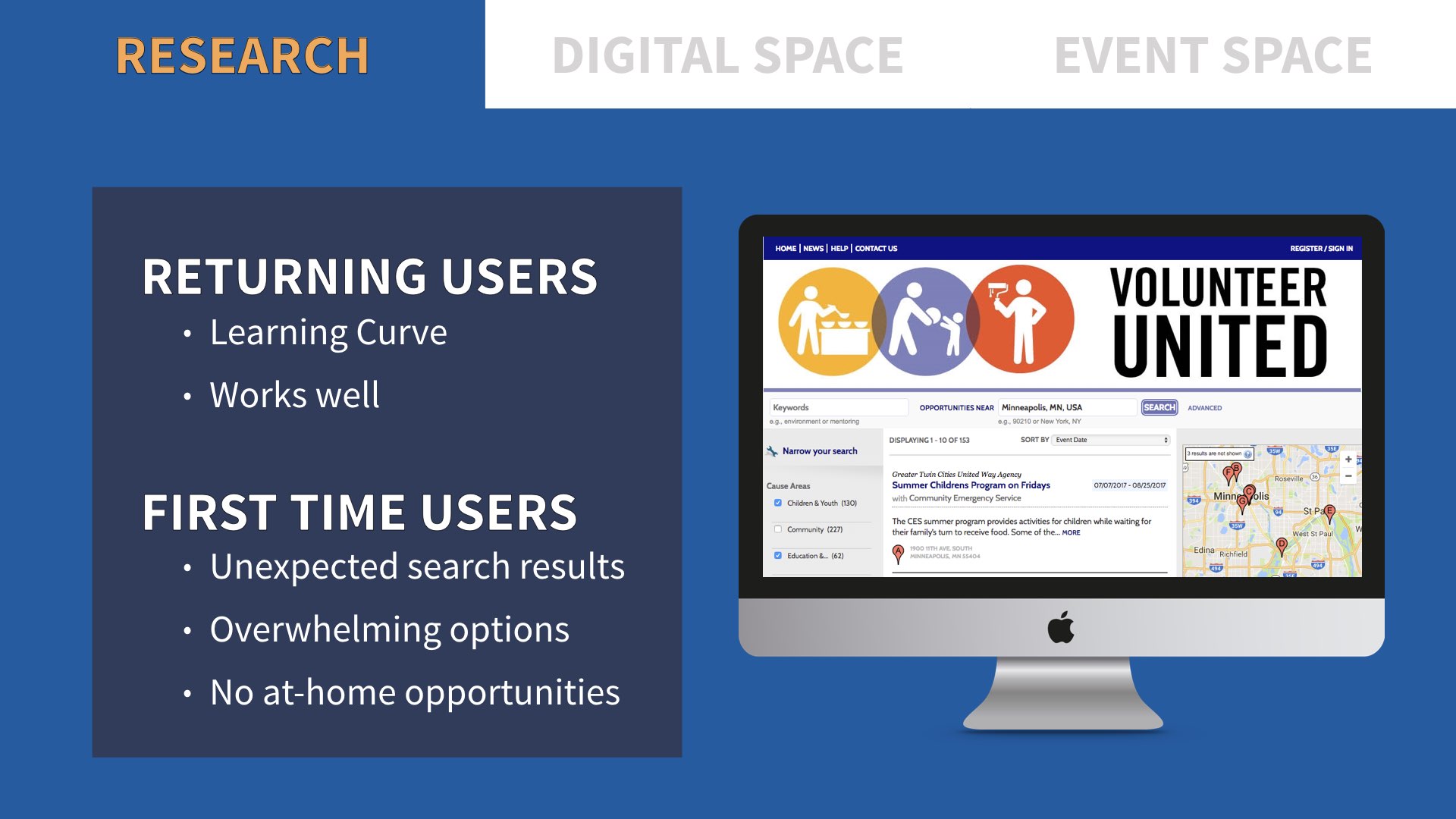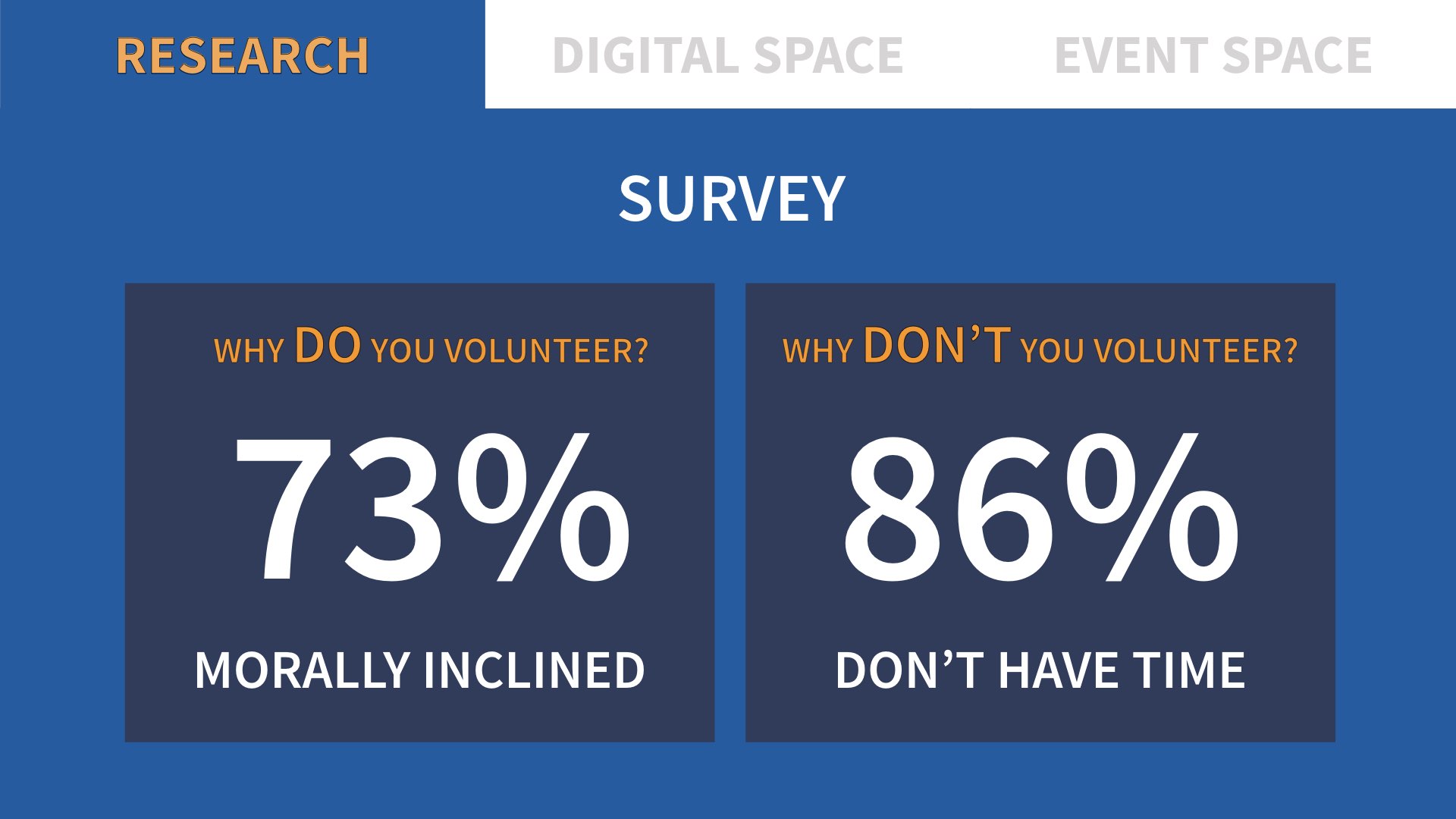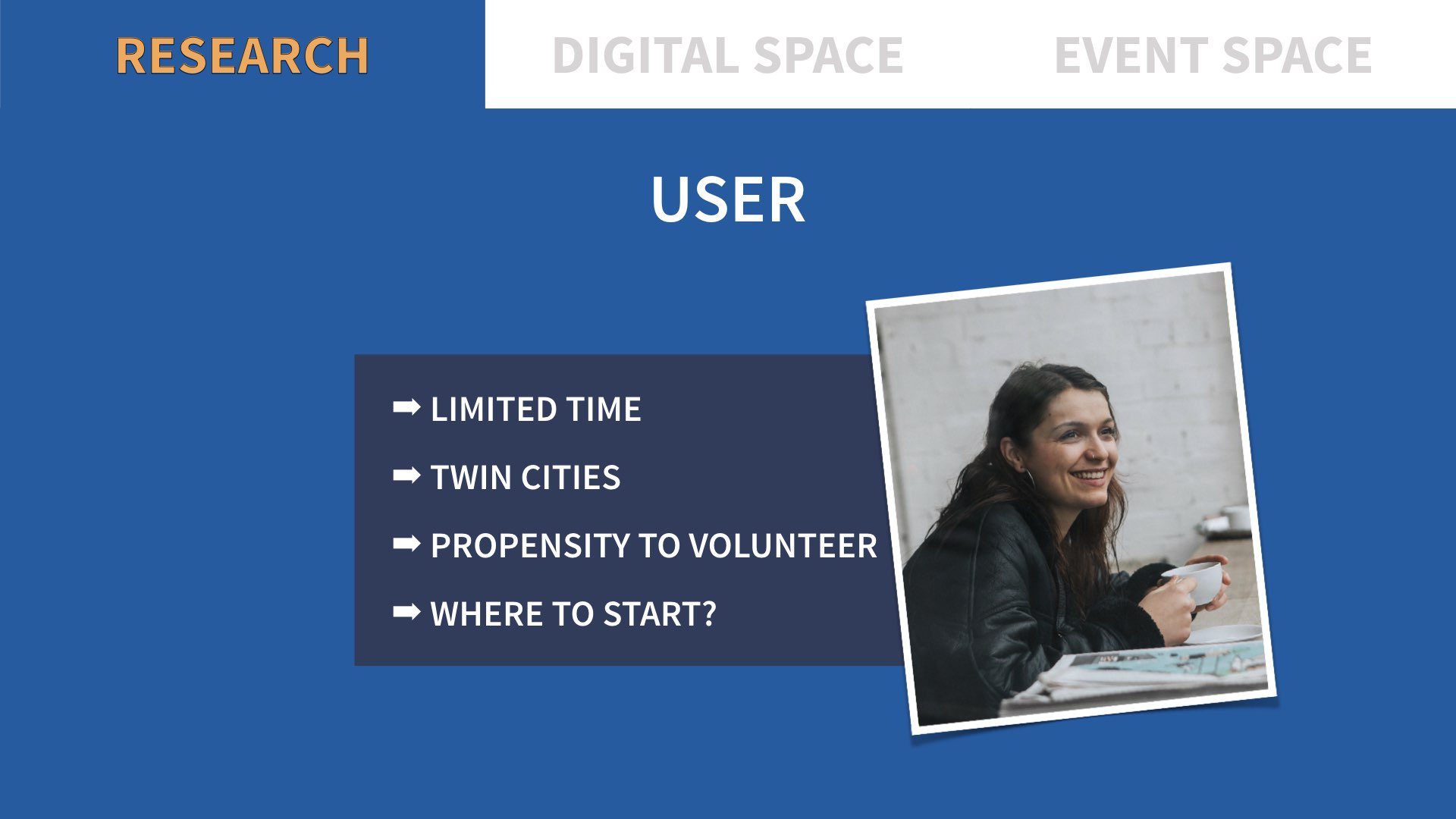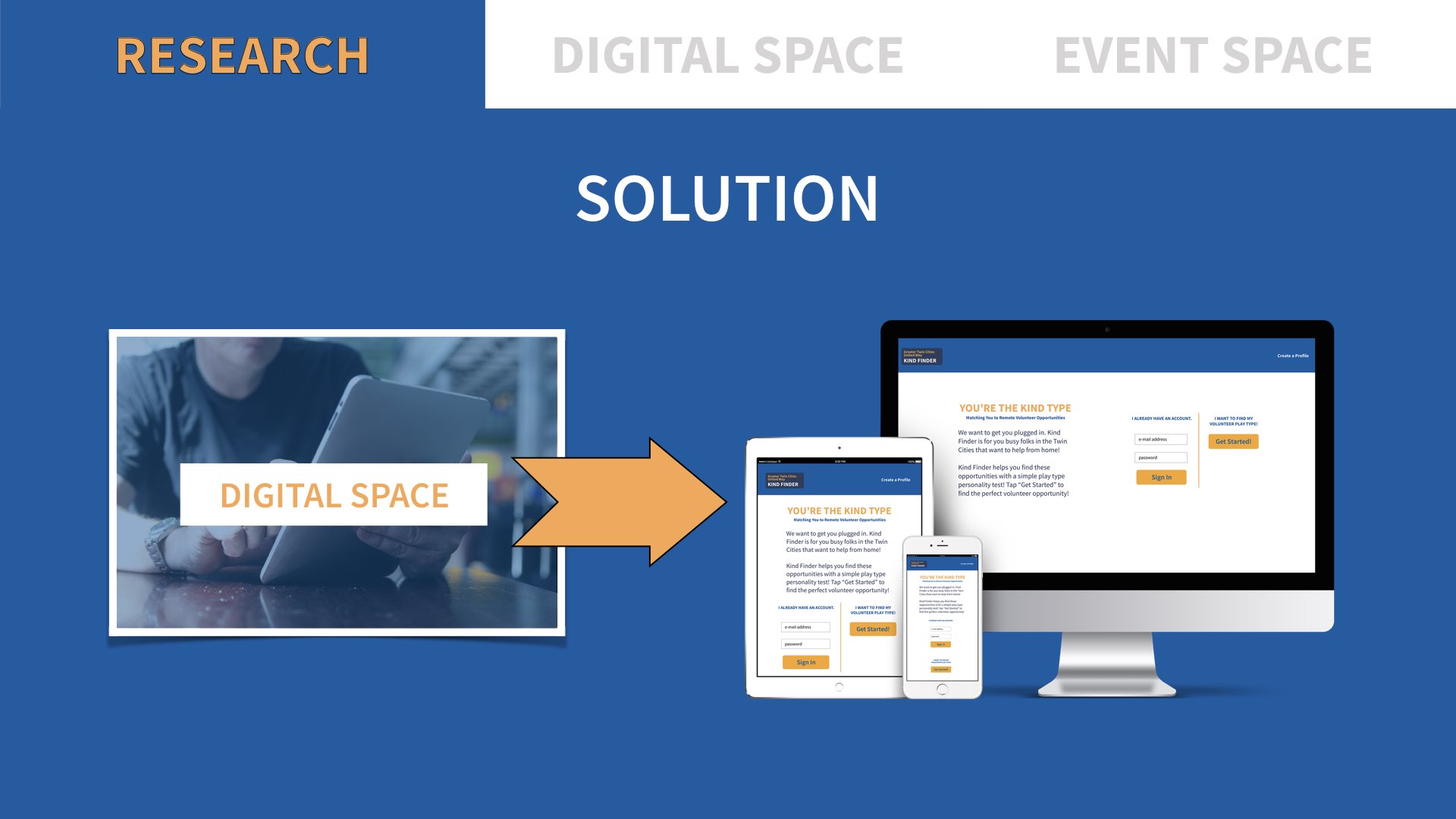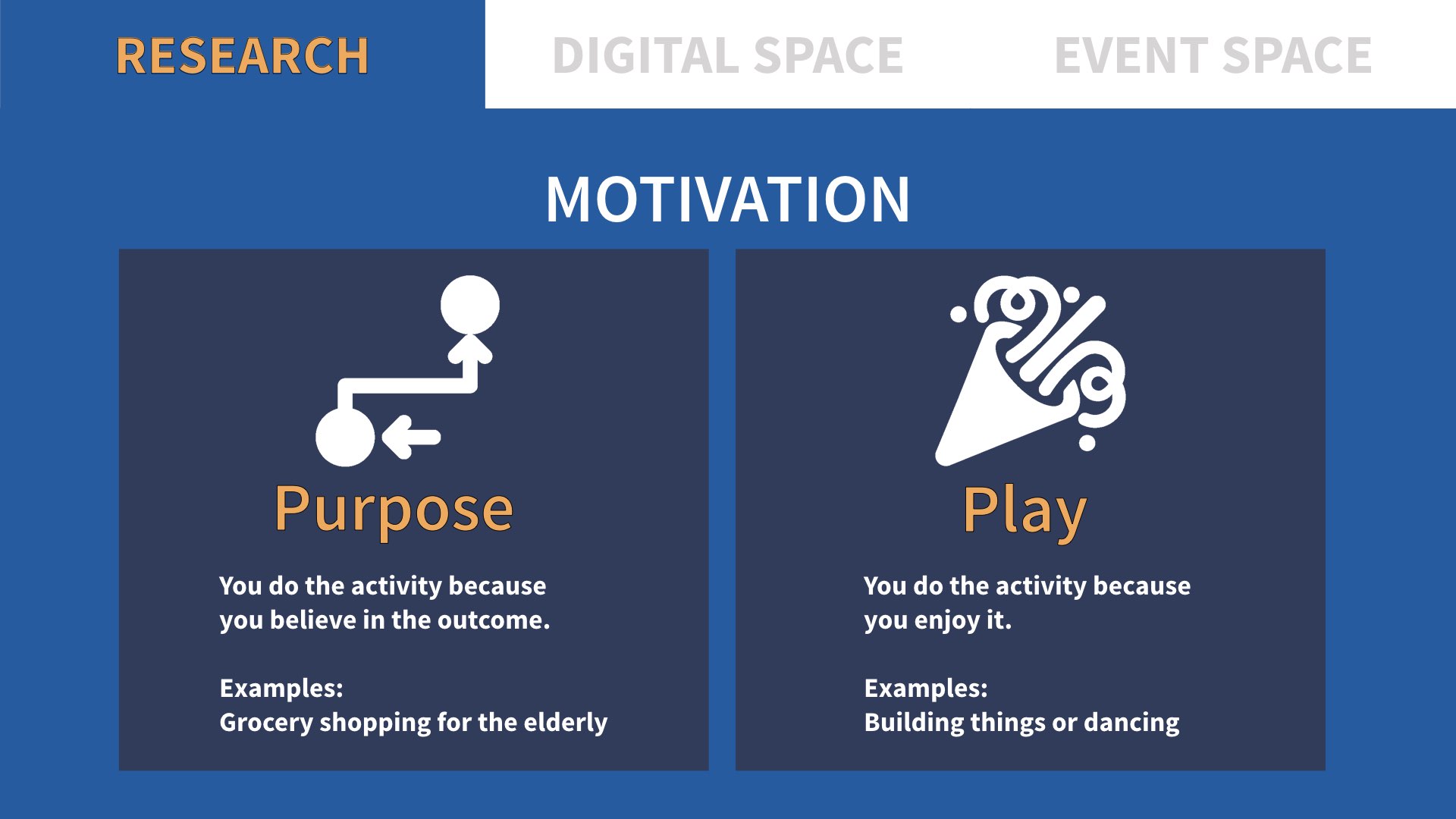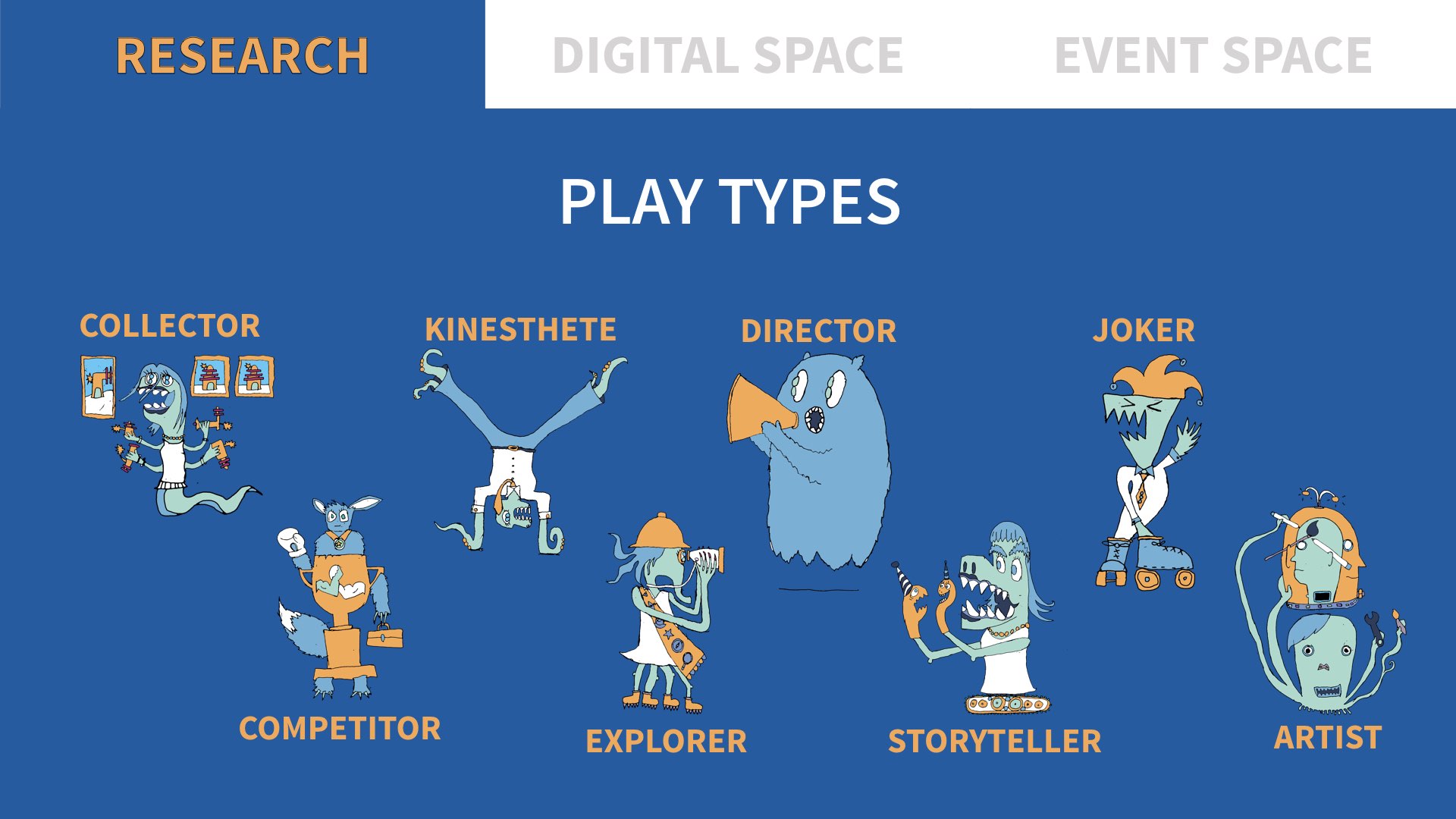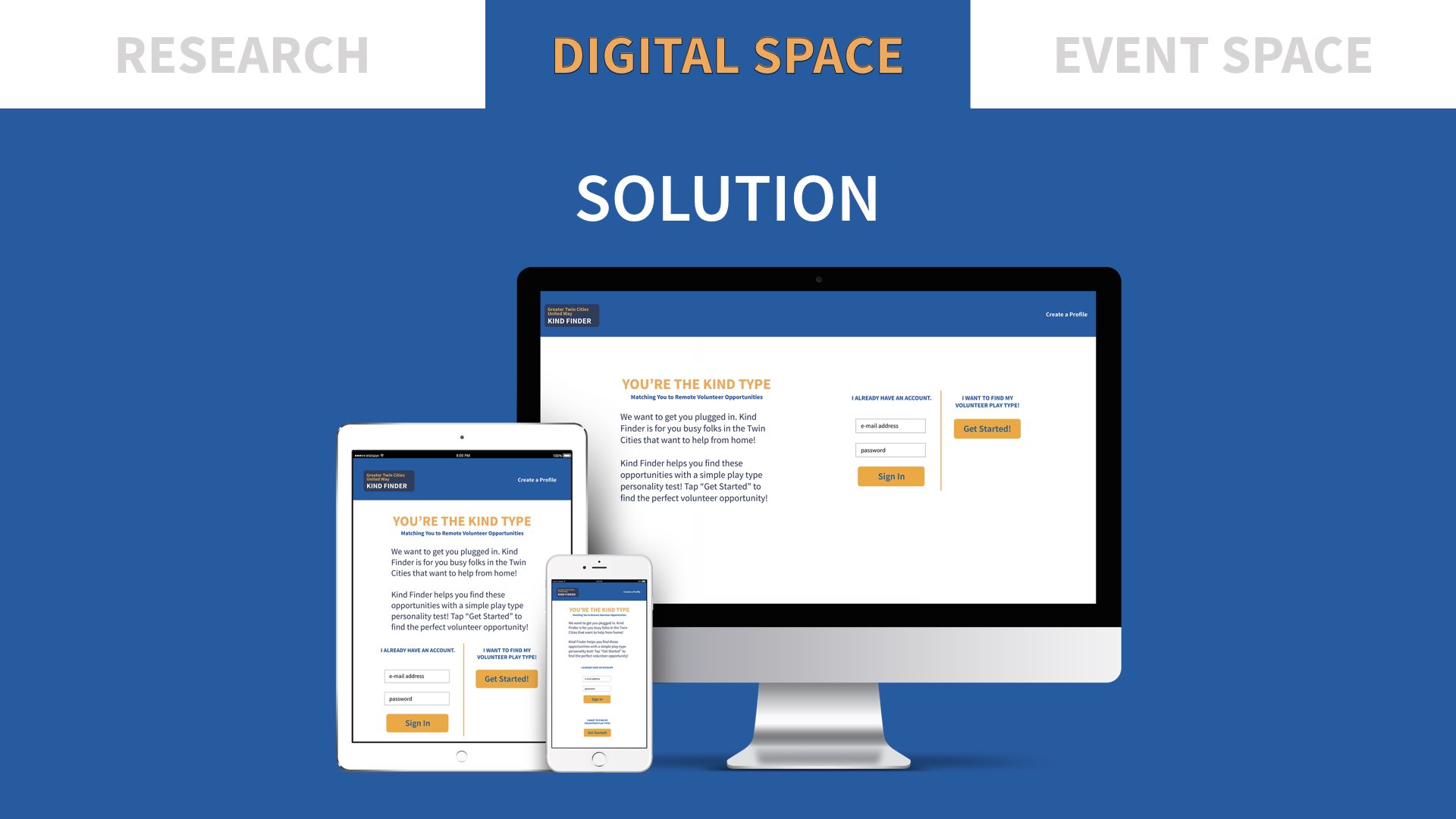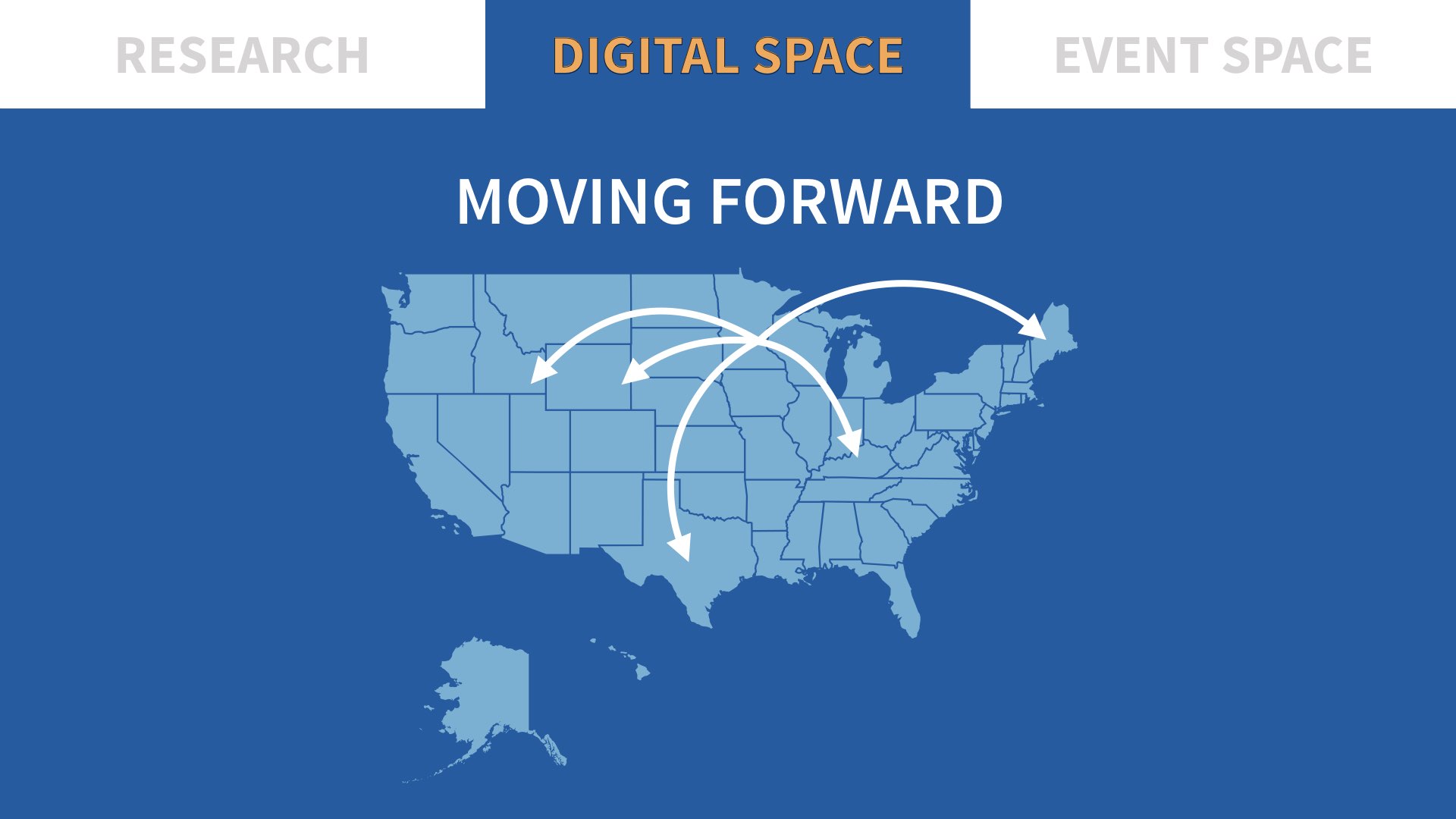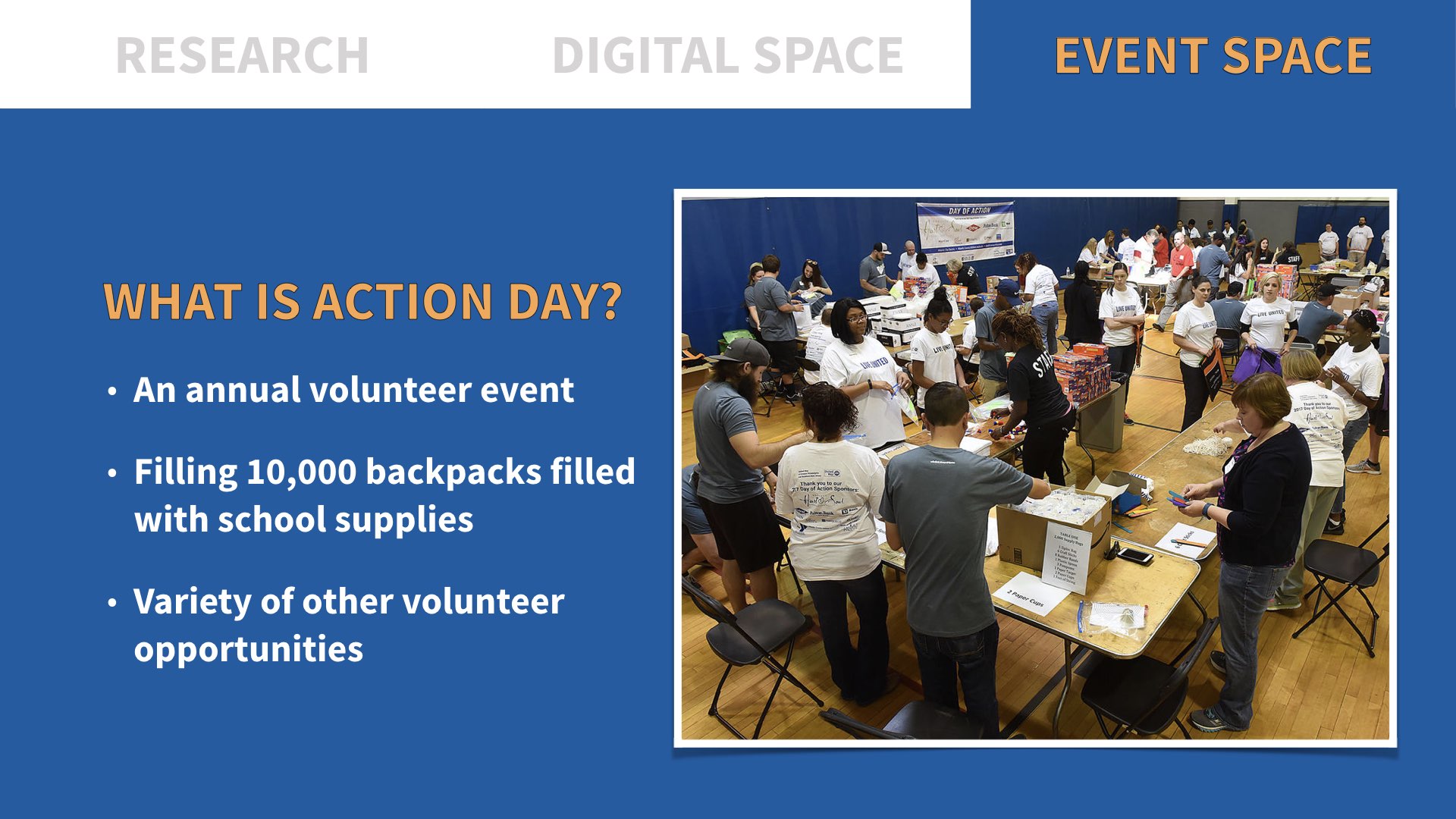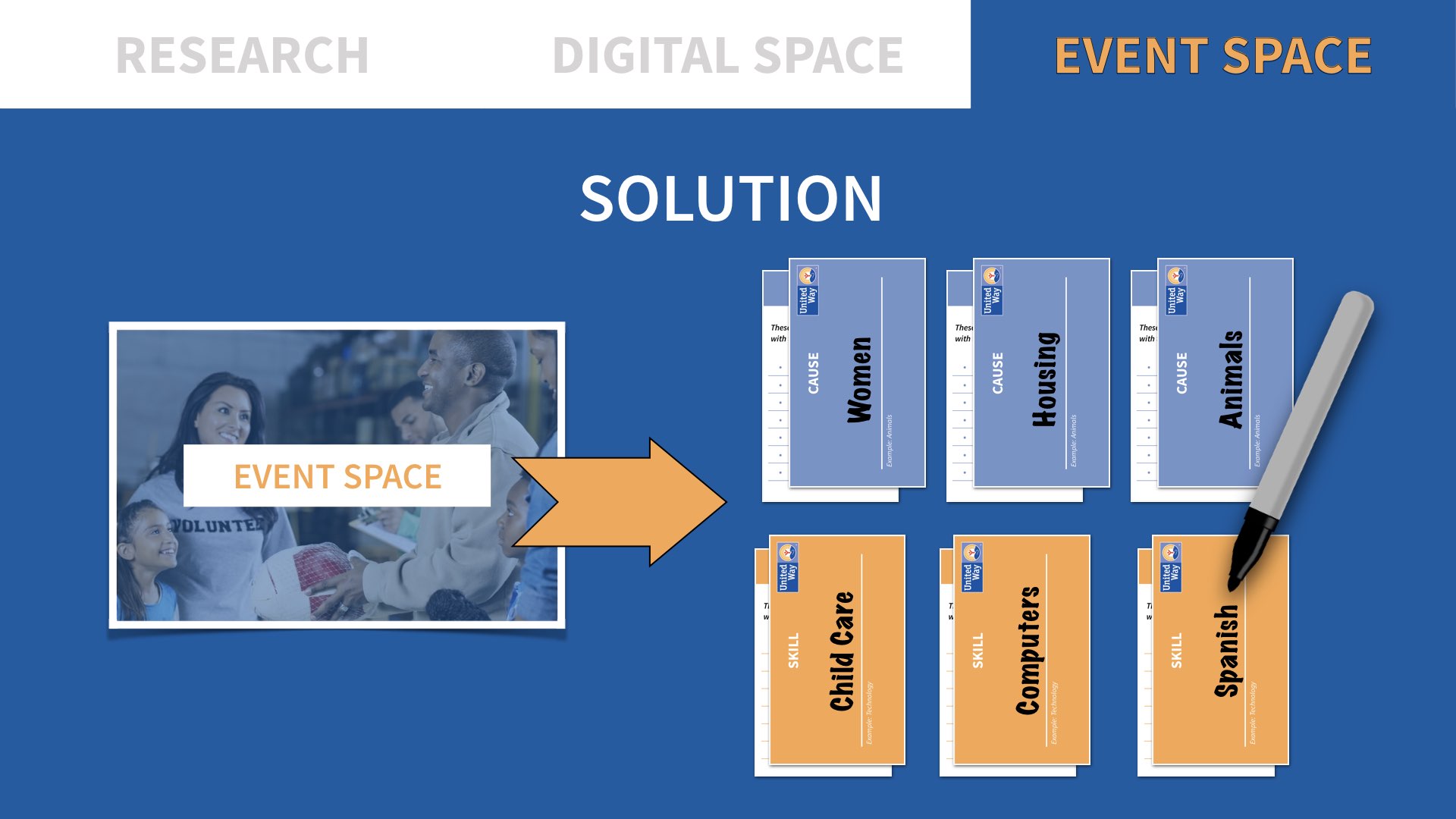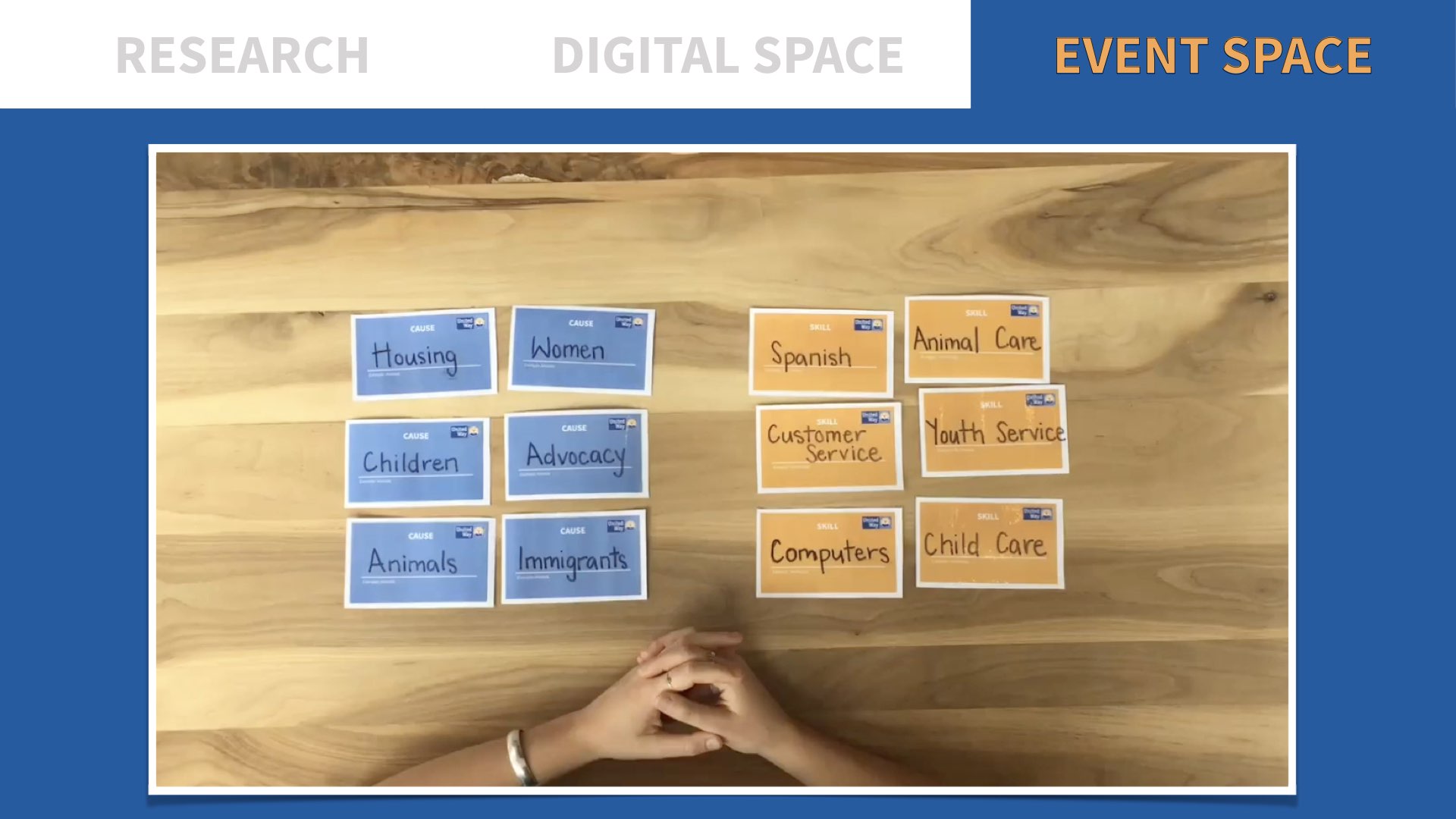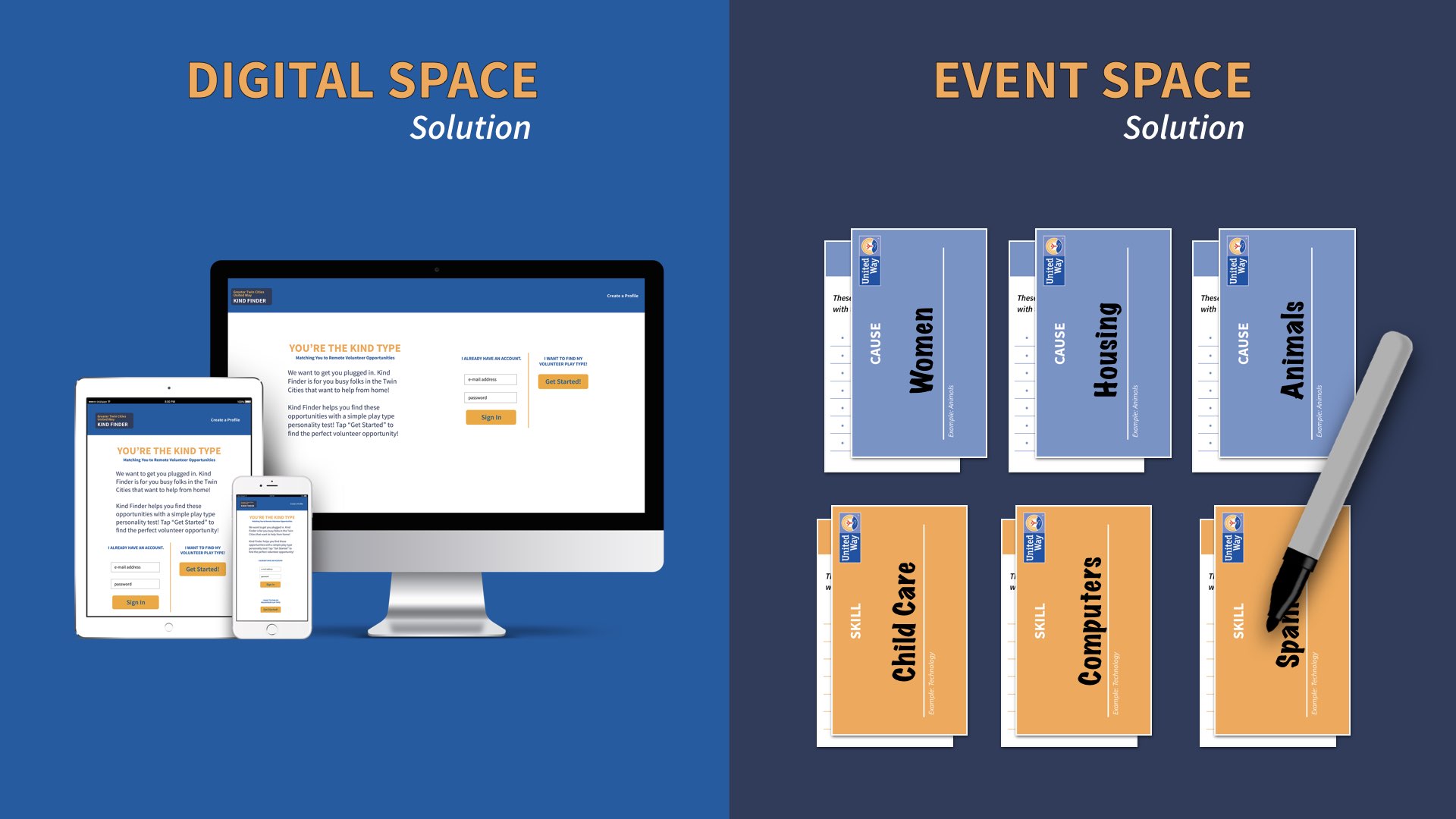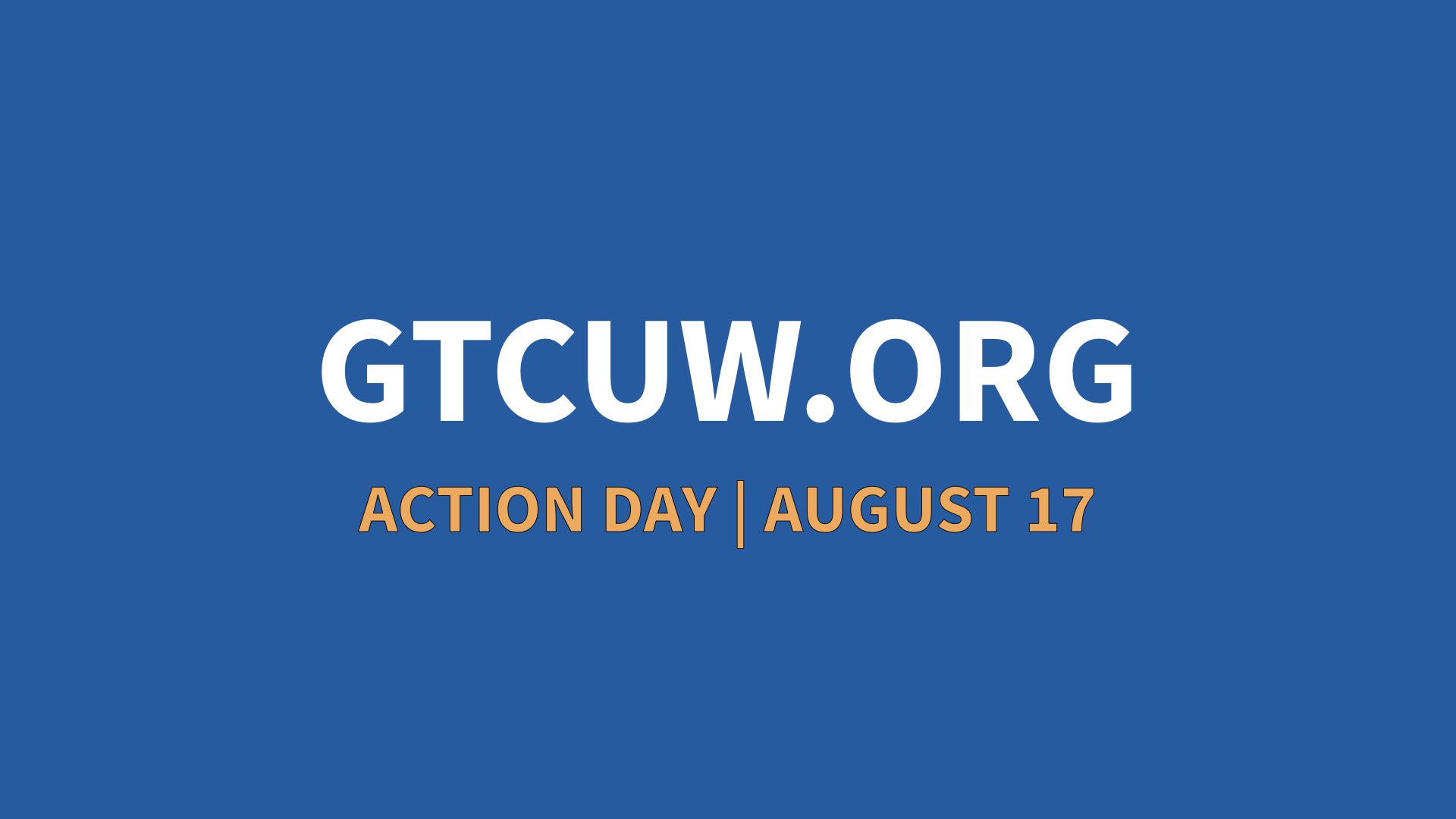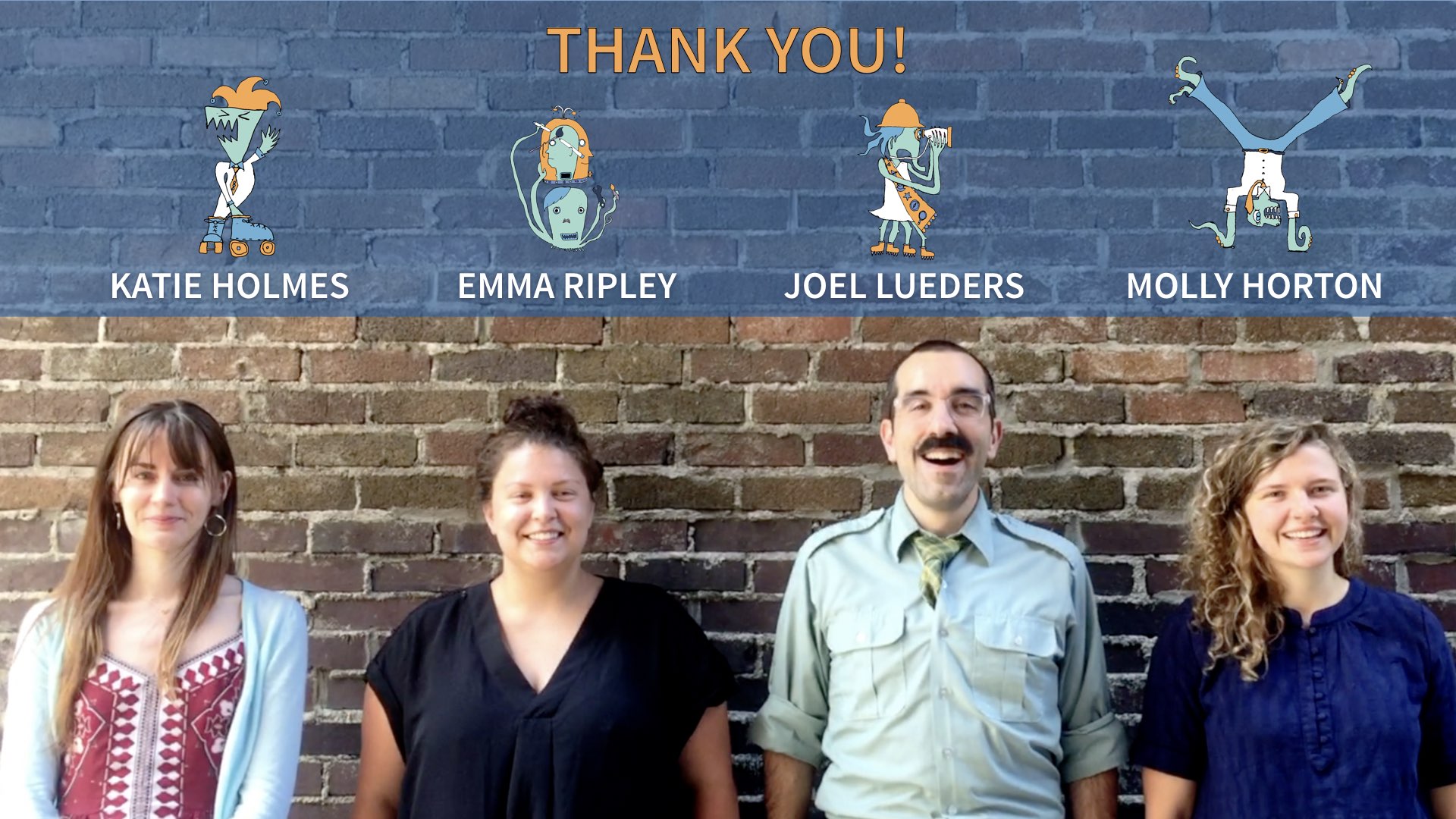
The Client
Greater Twin Cities United Way (GTCUW) is a nonprofit that seeks to unite caring people to build pathways out of poverty. In 2016 they touched the lives of over 1 million people in their 9-county region. They do this in part, by connecting over 63,000 people with local volunteer opportunities each year.
The Users
Busy individuals in the Twin Cities with the propensity to volunteer but don't know where to start.
The Group
During this process, I collaborated closely with Katie Holmes, Joel Lueders, and Emma Ripley. Although we delegated tasks among us, we were each an integral part of the entire process and had our hands in every component.
The PROblem
GTCUW predicts that there are 1 million potential volunteers in the Twin Cities that want to help, but don’t know where to start.
They want to recruit these users, in predominantly two spaces--the digital space and the event space. These two problem spaces require two different solutions, so that is exactly what we did.
RESEARCH
STAKEHOLDER INTERVIEWS
To better understand the problem space, we did stakeholder interviews focused on gathering information on the current system for volunteer engagement at GTCUW. We spoke with the following people to get multiple perspectives.
Zeb Carlson, Creative Content Manager, GTCUW
Stacy Emond, Digital Engagement Manager, GTCUW
John Dusek, Information Architect, Straight Line Theory
Mary Smith, Senior Volunteer United Manager, GTCUW
Julie Dyste, Volunteer United Program Coordinator, GTCUW
Current System
The challenge of getting volunteers plugged in, isn’t a new problem for Greater Twin Cities United Way. Today they work hard to connect people in 2 ways.
People can call Mary and Julie at the United Way office and get matched via phone interview. To get first hand experience, we had Emma call Mary to get matched with volunteer opportunities, while the rest of us observed and took notes. Mary is exceptional at her job. She was able to understand Emma's interests and immediately give individualized suggestions of what Emma could get involved in. This process is effective, but it is time consuming and does not allow for scaling.
The other option for prospective volunteers is to visit United Way’s current online tool on Volunteer Match, called Volunteer United to search for opportunities.
Usability Test
To better understand the digital experience of Volunteer United, we tested it with users. We found that for users who wanted to volunteer on site and knew exactly what they wanted to do—it worked really well! They were able to use the search bar to find their specific interests.
However for users that weren’t sure what they were looking for or wanted an at home opportunity—the tool proved to be confusing and require too much tribal knowledge to find meaningful results. Many of these users searched for broad keywords and didn’t get the results they expected.
SURVEY
To dig deeper we conducted a survey of over 100 participants and the results were clear. People are morally inclined to volunteer but they don’t feel like they have time to do so. This confirmed what GTCUW already thought; the goal was not to create new people that care rather, find those that already do care and connect them to existing needs in the community.
These are the people that are falling through the cracks of the current time-consuming phone calls or the confusing first-time experience of Volunteer United.
DIGITAL SPACE SOLUTION
Solution Overview
Our solution is Kind Finder, a web application that matches people who want to help with at home volunteer opportunities that align with their values and leverage their skills.
MOTIVATION
Our previous usability testing suggested that the current systems are not particularly motivation to users. Our solution needed to stand out.
So what actually does motivates people?
PurPOSE
Secondary research suggests that, purpose is a very strong motivator. Purpose is when you believe in the outcome of the work. You may not like doing it, but you believe in the greater mission of the work. For example, online shopping for groceries is annoying but if it helps a elderly person in your community you’ll be willing and happy to help.
PLAY
However, there is only one motivator that is stronger than purpose.
The strongest motivator is Play. Play is when your reason for doing the activity is the activity itself. You do it because you enjoy it. The work is its own reward.
Play can be very different for people. Some of us like to build things, while others like to tell stories, or go dancing. In his book Play, Stuart Brown has distilled play into 8 distinct play types. Joel Lueders, personified these play types as the characters below to help tell the story.
Illustrations done by Joel Lueders
KIND FINDER PROTOTYpE
We created an application called Kind Finder to identify the causes a user cares about, determine their play type, and use this information to match them with an at home volunteer opportunity that are interesting, rewarding and fits into their schedule!
Essentially, we’ve paired Purpose and Play together in a simply beautiful web app we’re calling Kind Finder. Our goal was to keep the user engaged. We do this by using a progress bar, language that promotes a positive self narrative, and encouragement along the way. If you're interested in seeing the interactive prototype, view it below!
EVENT SPACE SOLUTION
EVENT SPACE CONTEXT
The users in the event space are the same folks that want to help but don’t know where to start. The only difference, is that these people have made the first move in attending a volunteer event.
At large events, there is a positive energy in the air and people are excited to get involved. However, organizing that many people can be a slower process than people expect, and it ends up giving off a strong theme park vibe.
The hurry up and wait experience.
ACTION DAY
An example of one of these events is GTCUW's large annual event called Action Day. This year, Action Day will take place on August 17th and involves hundreds of volunteers packing 10,000 backpacks. Although the backpacks are the main event, GTCUW invites a number of their partner agencies to set up tables around the event space and offer additional volunteer opportunities.
They wanted a way to create a more meaningful connection between volunteers that aren’t actively packing backpacks and their agency tables.
SOLUTION
Our solution is the Kind Card kit! This is a set of Cause and Skill cards that relate the various volunteer opportunities to individuals passions and skills. This process was simple, quick, and gets people personally connected to a volunteer opportunities that matter to them.
This video show the Kind Cards in action. As you can see, this is simple, quick and gets volunteers to tables in the event space that fit their needs!
An event facilitator can start the matchmaking process with the Kind Card Kit by laying 6 cause cards and 6 skill cards on the table and ask the participant to choose 3 of each. The facilitator can flip over the selected cards and find the most common number on the back. This represents the table that the participant is matched with.
See the video below for a simple visual of how this works!
Moving Forward
This portable Kind Card deck could be scaled for use at volunteer events hosted by United Way chapters all over the country. There is potential for these cards to be made into a digital experience that works in conjunction with the Kind Finder web application.
Presentation
We gave a formal presentation to our stakeholders. This is the deck we used to compliment our commentary to successfuly share our ideas.
